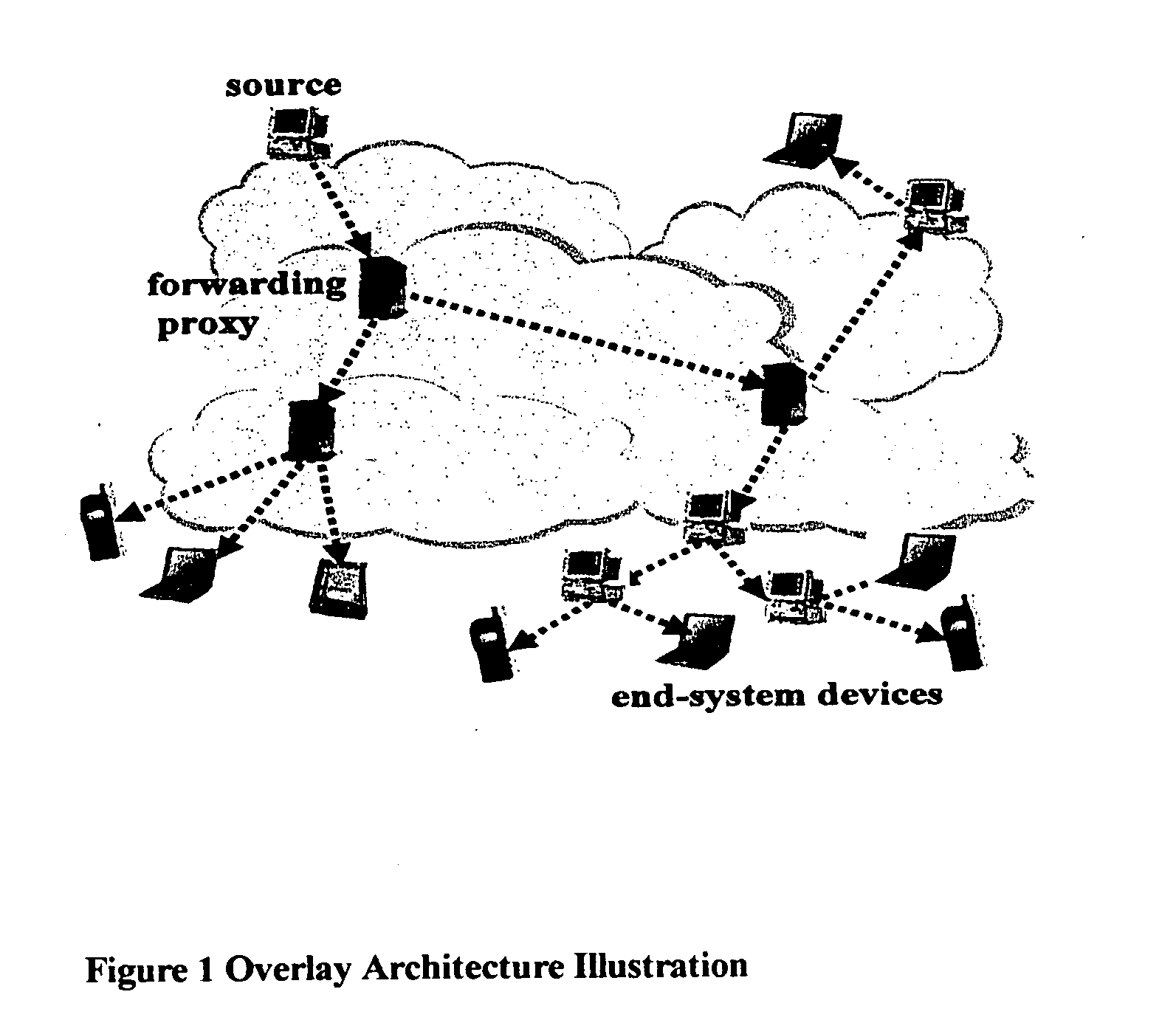On-demand group communication services with quality of service (QoS) guarantees
a group communication and quality assurance technology, applied in the field of on-demand group communication, can solve the problems of not taking into account the “last-mile” problem, the supply of internet backbone bandwidth has kept pace, and the “last-mile” bandwidth available to residences and small businesses remains a severe limitation
- Summary
- Abstract
- Description
- Claims
- Application Information
AI Technical Summary
Benefits of technology
Problems solved by technology
Method used
Image
Examples
Embodiment Construction
[0019] The overlay construction process is preferably addressed in two phases in accordance with the present invention. The first is the selection of a “forwarding degree’” (the number of receivers to which an end-system should forward incoming data) for each end-system that will forward data (many nodes will only receive data, and thus have a forwarding degree of zero). This selection has direct implications for the queuing and propagation delays and the packet loss. On one extreme, a chain topology (where each node forwards to one other) minimizes link stress (and therefore queuing latency / loss) but maximizes network transit latency. On the other extreme, a star configuration (where a single node forwards to all others) would minimize network latency at the expense of increasing link stress (and queuing loss). The second phase of overlay construction is the selection of the position (i.e. the parent) of each node in the overlay tree. This problem is NP (nondeterministic polynomial...
PUM
 Login to View More
Login to View More Abstract
Description
Claims
Application Information
 Login to View More
Login to View More - R&D
- Intellectual Property
- Life Sciences
- Materials
- Tech Scout
- Unparalleled Data Quality
- Higher Quality Content
- 60% Fewer Hallucinations
Browse by: Latest US Patents, China's latest patents, Technical Efficacy Thesaurus, Application Domain, Technology Topic, Popular Technical Reports.
© 2025 PatSnap. All rights reserved.Legal|Privacy policy|Modern Slavery Act Transparency Statement|Sitemap|About US| Contact US: help@patsnap.com



